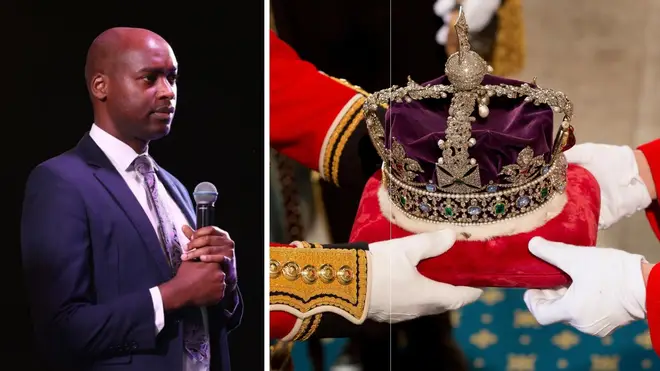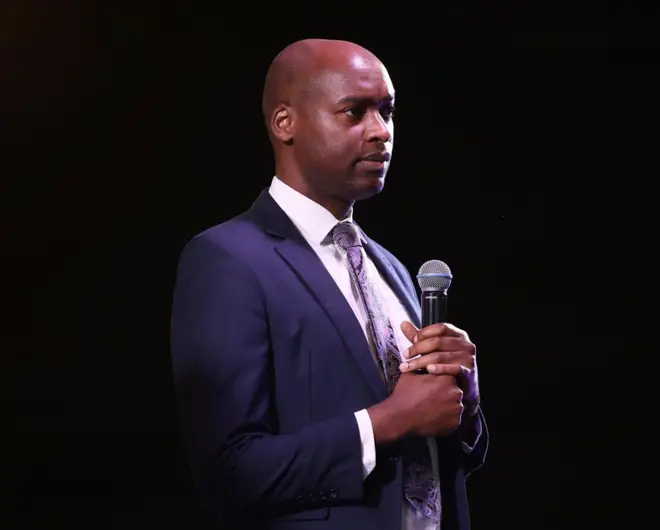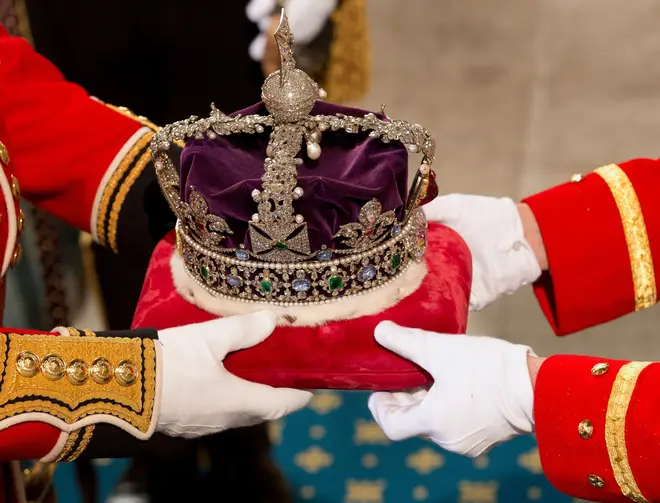
Ben Kentish 10pm - 1am
16 September 2022, 12:30 | Updated: 16 September 2022, 14:04

A South African MP has demanded Britain 'return' the diamonds used in the Queen's crown and spectre.
The Great Star of Africa, or Cullinan l, is part of a larger diamond and was given to the Royal Family as a gift after it was mined in South Africa in 1905 when the country was under British rule.
Currently it is on the end of a sceptre that belonged to the Queen. Since the death of the Queen last week there have been growing calls in South Africa for the diamond to be returned as they believe it is theirs.
In a tweet, Vuyolwethu Zengula, urged his country to demand reparations for the UK's colonial rule of the country, and leave the Commonwealth.
South Africa must:
— Vuyo Zungula MP 🇿🇦 (@ZungulaVuyo) September 8, 2022
1. Leave the Commonwealth.
2. Demand reparations for all the harm done by Britain.
3. Draft a new Constitution based on the will of the People of South Africa not the British Magna Carta.
4. Demand the return of all the gold, diamonds stolen by Britain.
The Queen's death has opened up a national conversation about colonialism, and how it relates to her legacy in South Africa, with local media debating the ownership of the Great Star of Africa - a gem cut from the larger Cullinan diamond.
The Royal Collection Trust, which oversees the royal collection of the British royal family, says the Cullinan diamond was presented to King Edward VII in 1907, two years after its discovery in a private mine in South Africa's old Transvaal province.
"It was sent to Asscher of Amsterdam to be cleft in 1908," it added.

Supporting the monarchy's claim to the precious stone, the Royal Asscher explains that the Cullinan diamond was purchased by South Africa's Transvaal government (run by British rule) and presented to King Edward VII as a birthday gift.
But a University of South Africa professor of African politics, Everisto Benyera, said "colonial transactions are illegitimate and immoral."
"Our narrative is that the whole Transvaal and Union of South Africa governments and the concomitant mining syndicates were illegal, receiving a stolen diamond does not exonerate the receiver."
"The Great Star is a blood diamond ... The private (mining) company, the Transvaal government, and the British Empire were part of a larger network of coloniality."

The Cullinian diamond weighs around 3,106 carats in its natural form, and the original diamond was "the size of a human heart", according to the Royal Asscher.
It was cut into nine large stones and 96 smaller pieces, the largest of the stones was named the Great Star of Africa by King Edward VII, who also named the second largest cut stone the Smaller Star of Africa.
The larger diamond was set in the Sovereign's Scepter with cross, while the second cut stone was mounted in the Imperial Crown.
The Queen has been seen in many portraits wearing the diamonds.
Speaking to CNN, Leigh-Ann Mathys, a national spokeswoman for the Economic Freedom Fighters - a South African opposition political party, also called for the return of the diamonds:
"The late Queen of England has flaunted these (diamonds) for over half a century. Our call is for repatriations for all colonial theft, which the theft of the Great Star of Africa is a part of.
"We don't call for its return, as this implies that there was a valid agreement in terms of which the British royal family was borrowed the diamond. It is in their possession purely as a result of colonial tenacities that suffocated natives in this country and elsewhere,"
Last month, a London museum agreed to return 72 objects looted from the Kingdom of Benin, in southern Nigeria, during a British military operation in 1897.
Read more: Tom Daley blames British Empire's legacy of colonialism' for homophobic laws in Commonwealth nations
Read more: Mass grave of at least 440 bodies discovered in Kharkiv after city liberated by Ukrainian forces
In 2018, an Egyptian archaeologist said that the Cleopatra's Needle obelisk, located on the banks of the River Thames in London, should be returned to Egypt - if the city would not restore the monument.
Zawi Hawass, a former minister of state for antiquities, said the obelisk had been forgotten since its last restoration in 2005, but argued his belief that the English people "deserve" to have the obelisk and that returning it should only be a final option.
The debate about treasures taken under during the Empire has even been depicted in Hollywood.
More than 6,000 people have signed a petition calling for the Great Star of Africa to be returned and put in a South African museum.
South Africa's President Cyril Ramaphosa offered his condolences following the death of the Queen but many have said instead he should have called for the diamond to be returned.